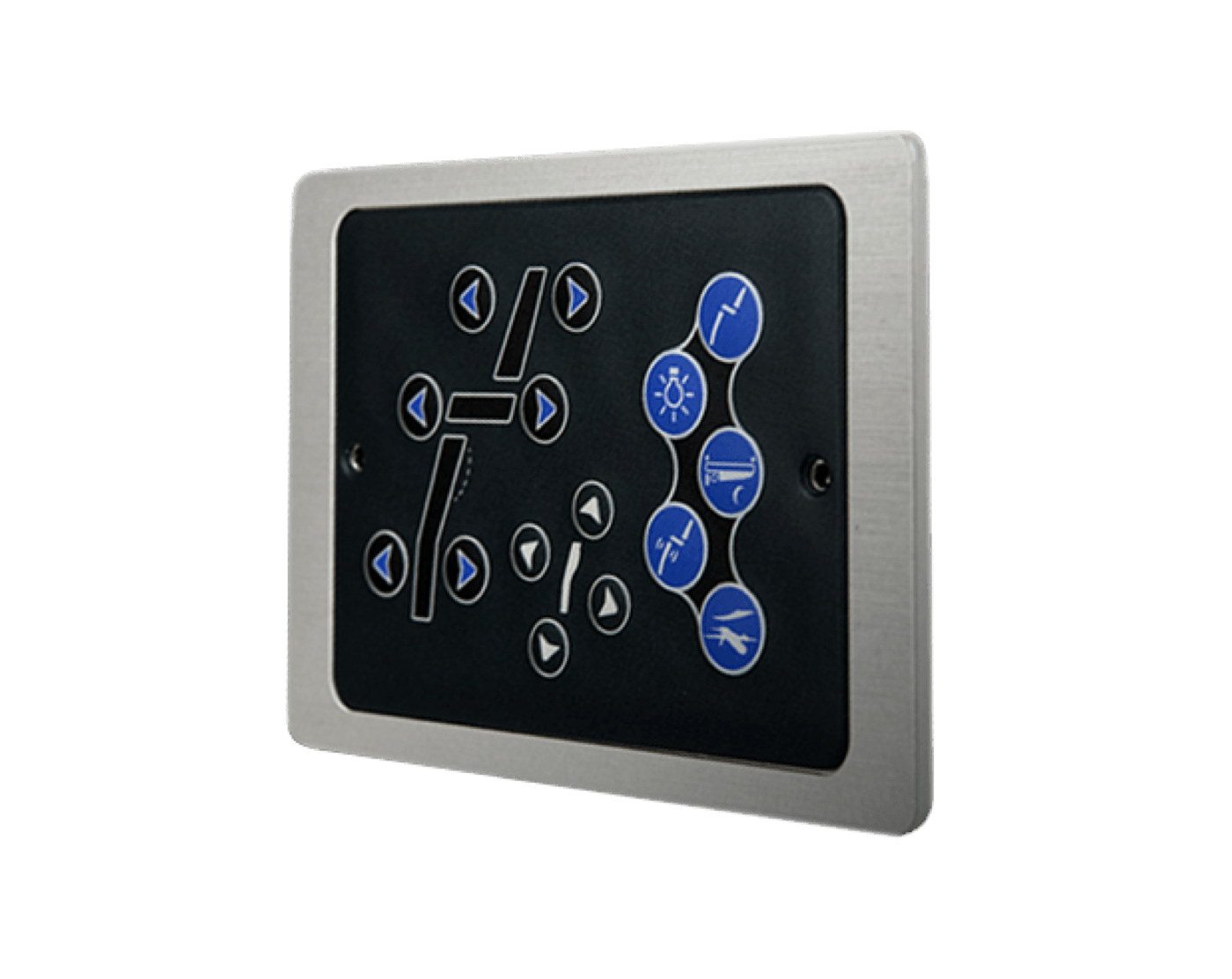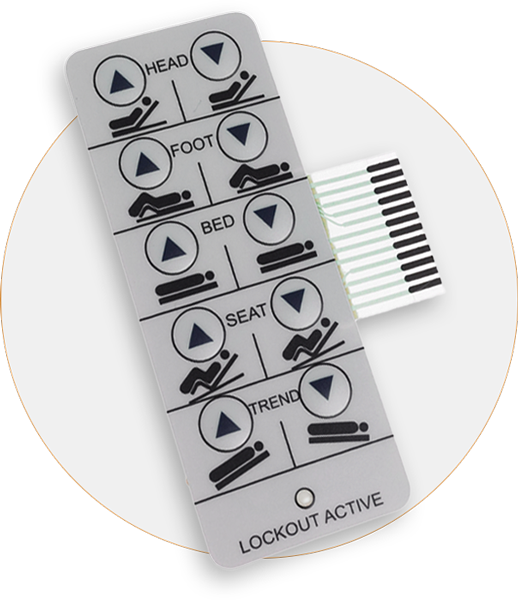The Influence of Membrane Switches on the Development of Smart Wearables
The Influence of Membrane Switches on the Development of Smart Wearables
Blog Article
Membrane Layer Switch Over Technology: The Trick to Trusted and Affordable User Interfaces
Membrane switch technology has actually arised as a critical component in the layout of customer interfaces, providing both reliability and cost-effectiveness across a varied range of applications. As we discover the multifaceted benefits of membrane buttons, their capacity for technology increases inquiries concerning future applications and developing fads.
Recognizing Membrane Layer Switch Over Technology
Membrane layer switch technology is a widely made use of user interface solution in numerous digital devices, supplying a seamless mix of capability and design. This technology integrates several layers of materials, normally including a graphic overlay, spacer layer, and a circuit layer. The graphic overlay presents the user interface components, while the spacer layer separates the circuit layer from the overlay till an individual triggers a button.
When pressure is put on the overlay, the circuit layer completes the electrical circuit, sending out a signal to the gadget. This system permits various setups, including responsive feedback and backlighting options, boosting individual communication. Membrane layer buttons are usually made utilizing durable products such as polyester or polycarbonate, ensuring longevity and resistance to ecological elements like moisture and dirt.
The flexibility of membrane changes enables their application in diverse markets, including medical devices, consumer electronics, and commercial controls. Their portable design permits integration into space-constrained atmospheres, giving an efficient interface without endangering aesthetic allure. Understanding the complexities of membrane layer switch innovation is vital for suppliers and designers seeking to develop reliable and efficient human-machine user interfaces.
Secret Benefits of Membrane Layer Buttons
While numerous user interface remedies exist, membrane changes offer unique advantages that make them a recommended option in various applications. One of the main advantages is their toughness; membrane switches are developed to stand up to rough ecological conditions, including moisture, dust, and temperature fluctuations, guaranteeing lasting performance. This durability dramatically minimizes the need for regular replacements, consequently reducing general upkeep expenses.

Moreover, membrane layer switches are lightweight and compact, making them appropriate for applications where room is limited. Their inconspicuous layout adds to a sleek look without jeopardizing performance.
Cost-effectiveness is also a remarkable advantage, as the production process for membrane layer switches often tends to be less costly compared to standard mechanical buttons. This affordability, incorporated with their integrity and ease of installment, positions membrane changes as a practical remedy for a large range of industries looking for reliable and efficient interface.
Applications Across Different Industries
How do membrane buttons adapt to the varied needs of different markets? Membrane switch modern technology is significantly identified for its flexibility, making it suitable for a broad range of applications throughout multiple sectors.
In customer electronic devices, membrane layer buttons offer a portable option for remotes and home appliances, enhancing customer experience via user-friendly design. In addition, the commercial industry leverages membrane buttons for equipment control panels, taking advantage of their resistance to rough environments, such as dampness and dust.
Military and aerospace applications great post to read also utilize membrane layer switches for their dependability and ability to hold up against extreme conditions, guaranteeing operational efficiency in essential scenarios. Moreover, the food and drink industry embraces these switches for automated systems, where sanitation and simplicity of procedure are vital. Eventually, membrane switches are customized to fulfill the one-of-a-kind demands of each sector, proving their essential duty in modern-day innovation interfaces
Design and Personalization Choices

In the world of membrane switch technology, layout and modification choices play a pivotal role in improving capability and user communication. These buttons can be read this tailored to meet details operational demands and aesthetic choices, making them flexible components in different applications.
One of the key modification options is the format of the button itself, which can be designed to fit unique user interfaces and ergonomic considerations. By adjusting the shape, dimension, and setup of buttons, suppliers can create intuitive layouts that facilitate convenience of usage. In addition, the consolidation of various shades and visuals overlays enables branding and enhanced exposure, guaranteeing that individuals can rapidly identify functions.
Furthermore, membrane layer buttons can be crafted with numerous responsive feedback mechanisms, such as increased switches or distinct clicks, to enhance the individual experience. Various materials can likewise be picked for longevity and environmental resistance, attending to elements such as wetness, temperature level changes, and chemical exposure.
Inevitably, the considerable style and modification options available in membrane button technology encourage companies to develop tailored remedies that not just satisfy functional requirements however why not try this out additionally align with their branding and functional needs.

Future Patterns in Membrane Switches
As membrane button innovation proceeds to progress, future trends are progressively concentrated on boosting individual experience and incorporating sophisticated capabilities. One substantial pattern is the assimilation of touch-sensitive and capacitive modern technologies into typical membrane buttons. This advancement permits more instinctive individual interfaces, providing responsive feedback while preserving a smooth layout.
Another emerging fad is using eco pleasant materials, driven by the expanding demand for sustainable production techniques. Producers are seeking to decrease their carbon footprint by utilizing recyclable substrates and low-impact inks, straightening with worldwide sustainability objectives.
Furthermore, the rise of the Internet of Things (IoT) is triggering the unification of smart features right into membrane layer switches. Improved connection choices will certainly allow tools to communicate with each various other, permitting seamless integration into wider systems.
Additionally, developments in printing technologies, such as digital printing, are enabling higher design adaptability and personalization. This allows manufacturers to create elaborate designs and vibrant colors cost-effectively.

Final Thought
In final thought, membrane layer button modern technology stands for an essential innovation in interface layout, providing substantial benefits in durability, personalization, and cost-effectiveness. Its prevalent applicability throughout diverse industries highlights its value in modern-day technology. As advancements continue to emerge, specifically in touch-sensitive user interfaces and lasting products, the potential for membrane switches to improve individual experience and capability remains promising. Continued exploration of this modern technology will likely yield additionally improvements and broaden its extent in future applications.
Report this page